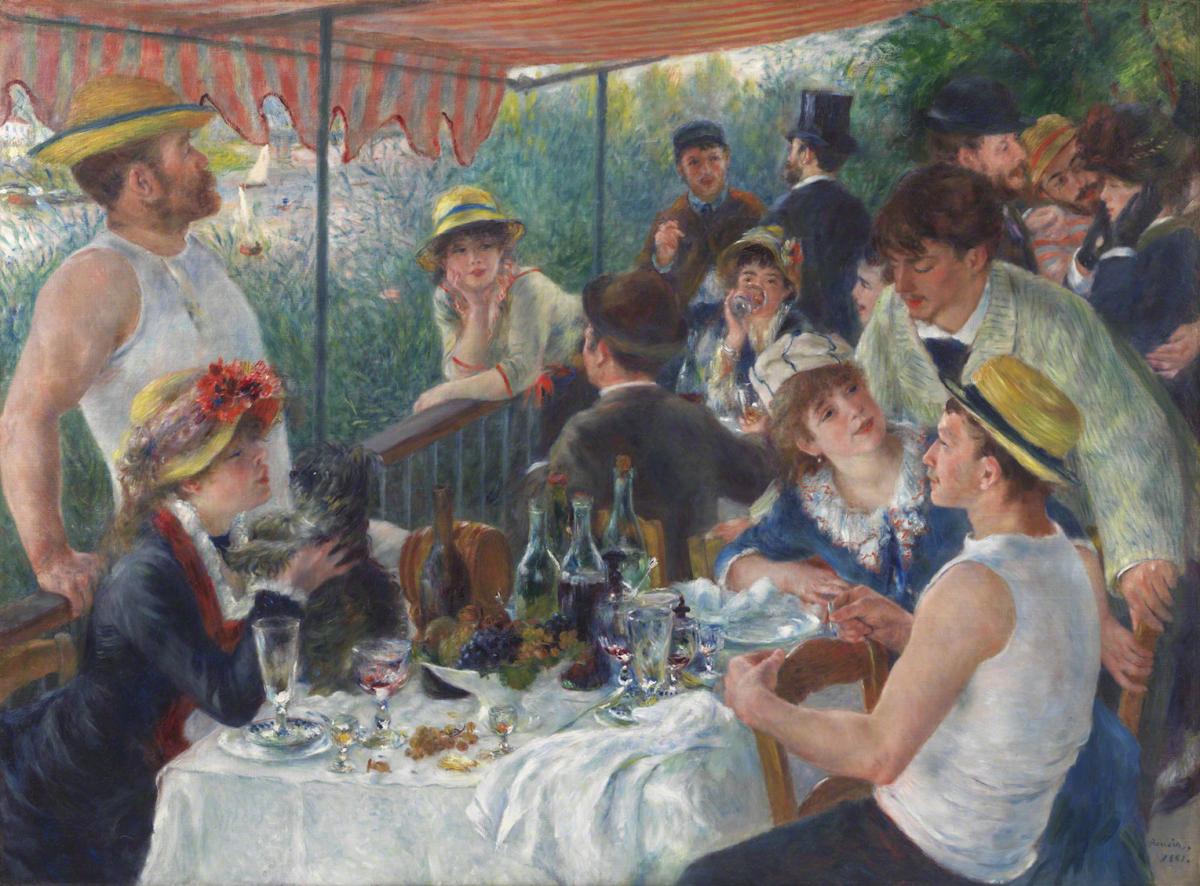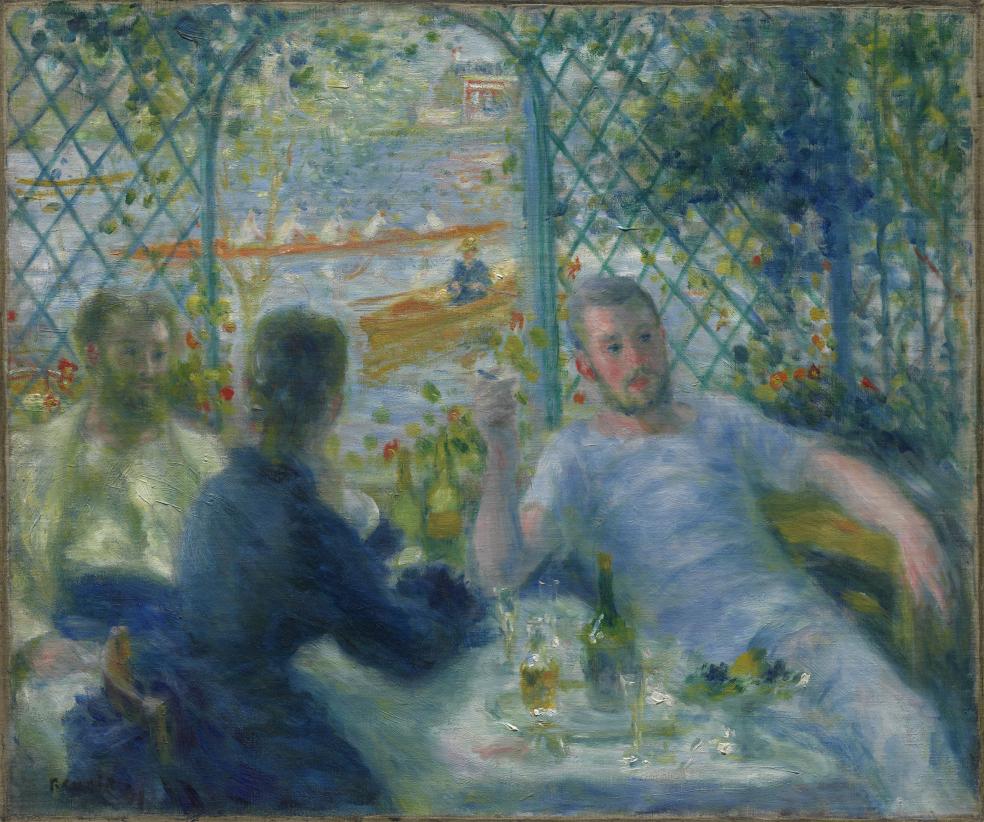Luncheon of the Boating Party
Pierre-Auguste Renoir ( between 1880 and 1881 )

Shortly after confirming his purchase of the Luncheon of the Boating Party, Duncan Phillips wrote an enthusiastic letter from Paris informing his treasurer of the acquisition: “The Phillips Memorial Gallery is to be the possessor of one of the greatest paintings in the world … It will do more good in arousing interest and support for (the Phillips Memorial Gallery) than all the rest of our collection put together. Such a picture creates a sensation wherever it goes.” In an affirmation of Phillips’s foresight, these statements have proved themselves correct. The Luncheon of the Boating Party is undoubtedly among the most visited, commented upon, and memorable paintings in The Phillips Collection.
Most of the models in the painting, all friends of the artist, have been identified. In the right foreground, Angèle, one of Renoir’s frequent models, turns her head toward the standing Maggiolo, a journalist. The painter Gustave Caillebotte sits backward in his chair and stares across the table at Aline Charigot, Renoir’s future wife, who coos at her terrier, while the burly Alphonse Fournaise Jr., son of the restaurant’s owner, leans against the balcony’s railing surveying the scene. In the center, Baron Raoul Barbier, a former cavalry officer, is seated with his back to the viewer speaking to the woman resting on her elbows on the railing, who is thought to be Alphonsine Fournaise, the daughter of the proprietor. Across the table from Barbier is the actress Ellen Andrée, drinking from a glass. Behind her, the top-hatted Charles Ephrussi, a banker and editor of Gazette des beaux-arts, chats with Jules Laforgue, poet, critic, and Ephrussi’s personal secretary. In the upper right, Eugène Pierre Lestringuez, an official in the Ministry of the Interior, laughs with Jeanne Samary, a famous actress with the Comédie Française, while the artist Paul Lhote, a close friend of Renoir’s, cocks his head. Renoir has immortalized his friends to such a degree that the image is “not anectdotal but monumental.” Marjorie Phillips was inspired to write: “In the light of time it does not matter much who the figures are. They are every man, all people.” Renoir’s magnus opus is a very tightly composed work, uniting within one image the time-honored compositional traditions of figure painting, still life and landscape.
Hailed as “one of the most famous French paintings of modern times” when it was first exhibited, the Luncheon of the Boating Party was flanked by Alfred Sisley’s Snow at Louveciennes and Banks of the Seine at the Phillips Memorial Gallery in December 1923. At the time, Phillips had intentions of forming a unit of Renoir’s works; however, as the painting came to serve its purpose as a magnet attracting to the museum “pilgrims to pay homage from all over the civilized world,” Phillips realized that the Luncheon of the Boating Party was the only major work by the artist that he would need.

Renoir and Friends: Luncheon of the Boating Party
The first exhibition to focus specifically on this singular masterwork